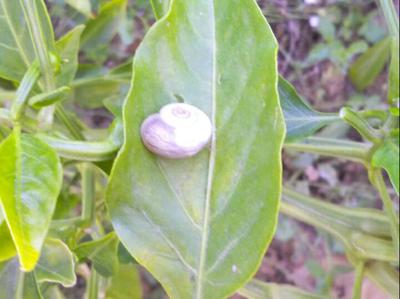Slugs and Snails
Gastropoda
Other
In a Nutshell
- Feeding damage in leaves, stems, flowers, tubers and bulbs.
- Silvery slime trails on plant foliage and soil surface.
- Can kill young seedlings.
Can also be found in
Symptoms
Snails and slugs are a widespread pest that can cause serious destruction in crops if they develop in large numbers. They eat irregularly and often leave large holes in leaves but can also affect stems, flowers, tubers and bulbs. In potatoes, they can make round superficial holes in the skin or dig extensive cavities into the tubers, causing considerable damage. Silvery slime trails can be found on plant foliage and soil surface. They particularly prey on young tender plants and can actually kill young seedlings by completely eating them.
Recommendations

Organic Control
The use of pellets based on ferric phosphate is approved for organic growers. Predators such as hedgehogs, birds, frogs, toads, blindworms and ground beetles can help control when present in the fields.

Chemical Control
Always consider an integrated approach with preventive measures together with biological treatments if available. Because of their diversity and life cycle, slugs are generally out of reach of chemical controls. Pellets based on metaldehyde can be used to lure them out of their holes. Spread them after rain, when slugs and snails are active.
What caused it?
Snails and slugs feed on decomposing organic matter, on leaves, roots, and tubers of a variety of crops. Slugs are underground dwellers living in cracks and tunnels made by plant stems or worms and only come to the surface to mate. These animals thrive in wet weather conditions, so the infestation occurs mainly after dewy nights or after rainfalls. Most species survive mild winters and become active again in spring.
Preventive Measures
- Select high and medium-resistant varieties.
- Plant early or choose early-harvesting varieties.
- Avoid planting in heavy soils, as these are favored by slugs.
- Plow the soil once or twice before planting to expose the slugs to predators.
- Place coffee grounds around the crop of choice to repel these pests.
- Build a fence or net around your crop.
- Use non-lethal traps such as old wet sacks and rotten wooden boards.
- Manually remove the slugs or snails to mitigate the infestation.
- Avoid excessive irrigation during the morning.
- Remove weeds from your field and the surrounding area.
- Stimulate populations of predators.
- Lift the crop as early as possible.
- Remove mulch from the field.



